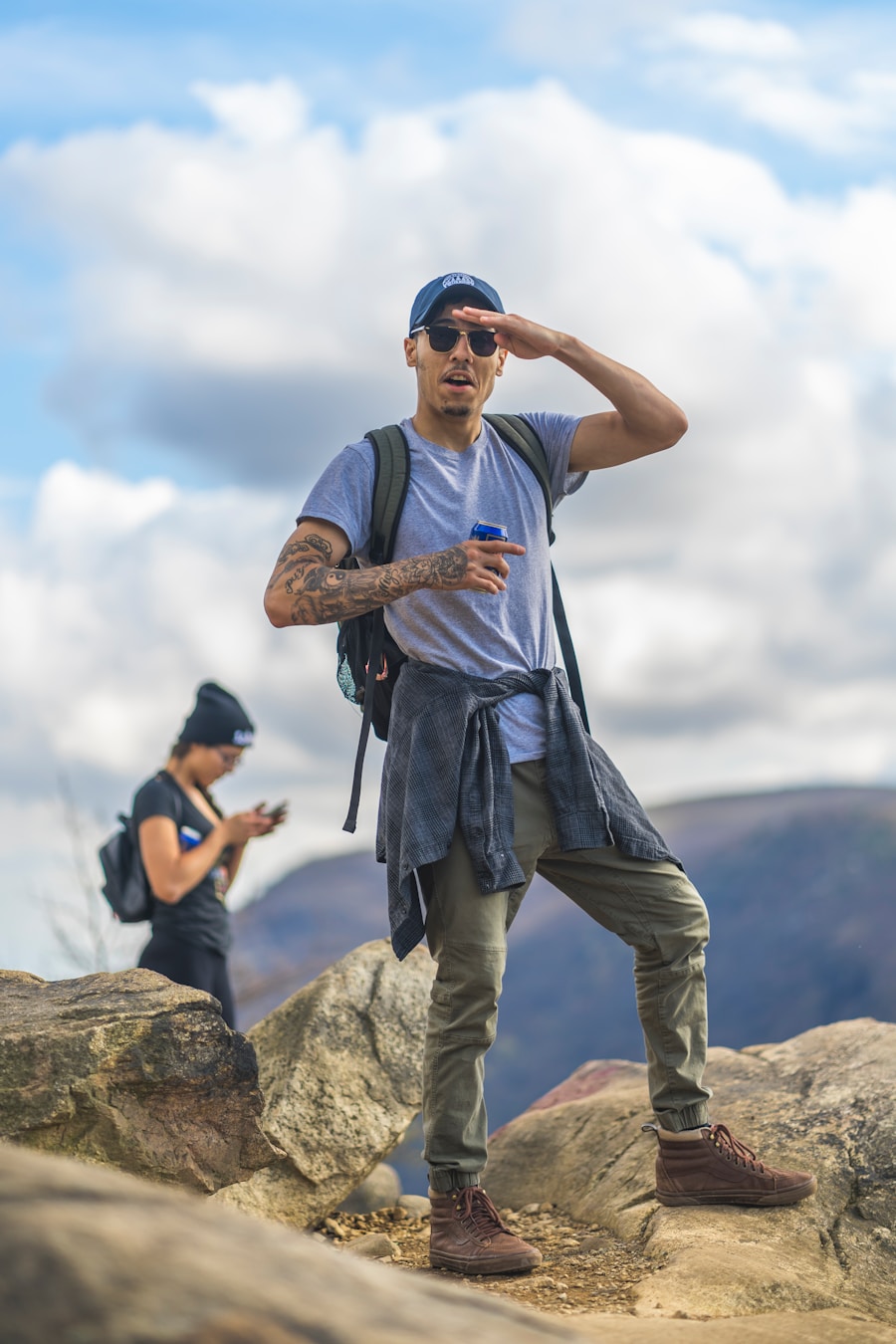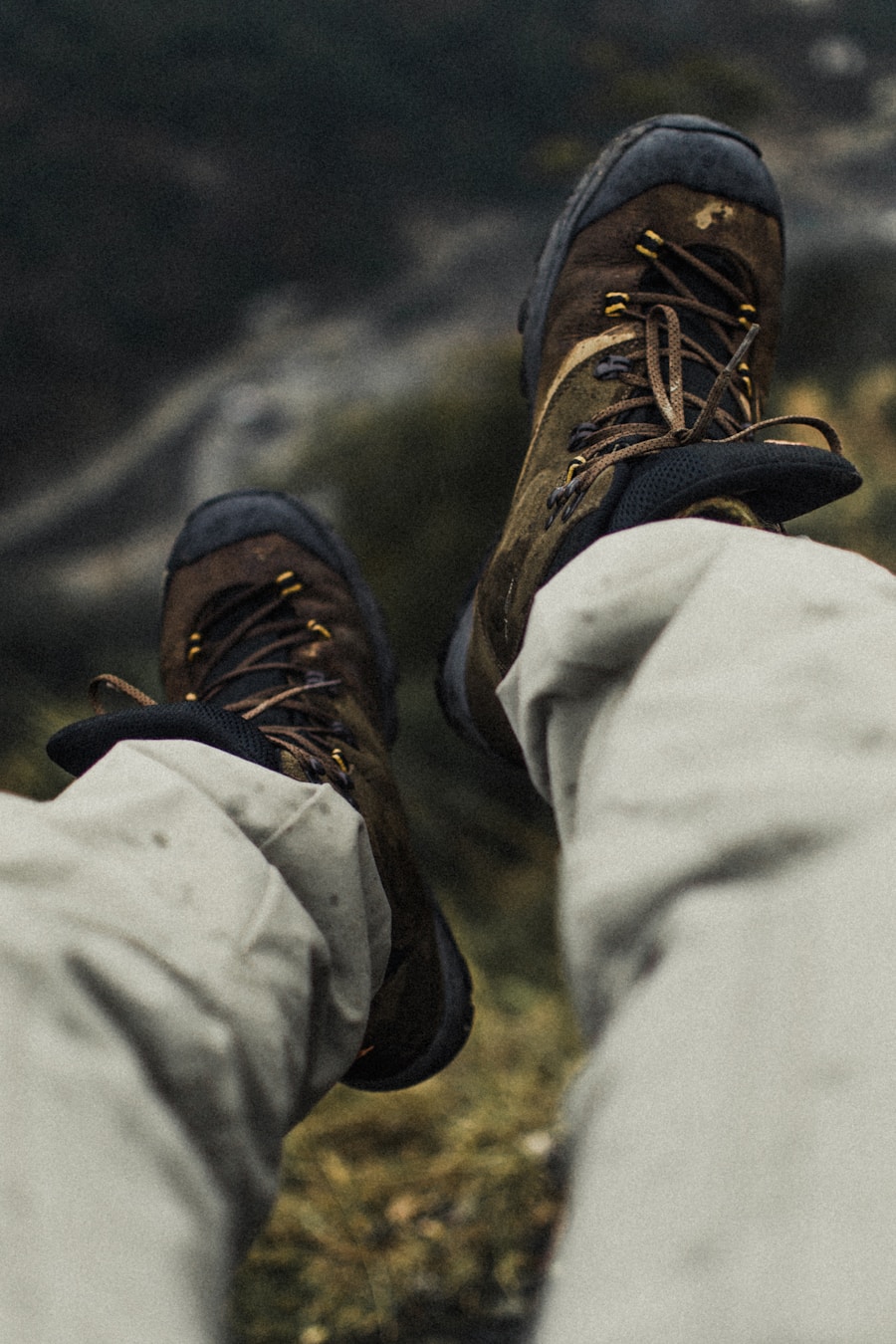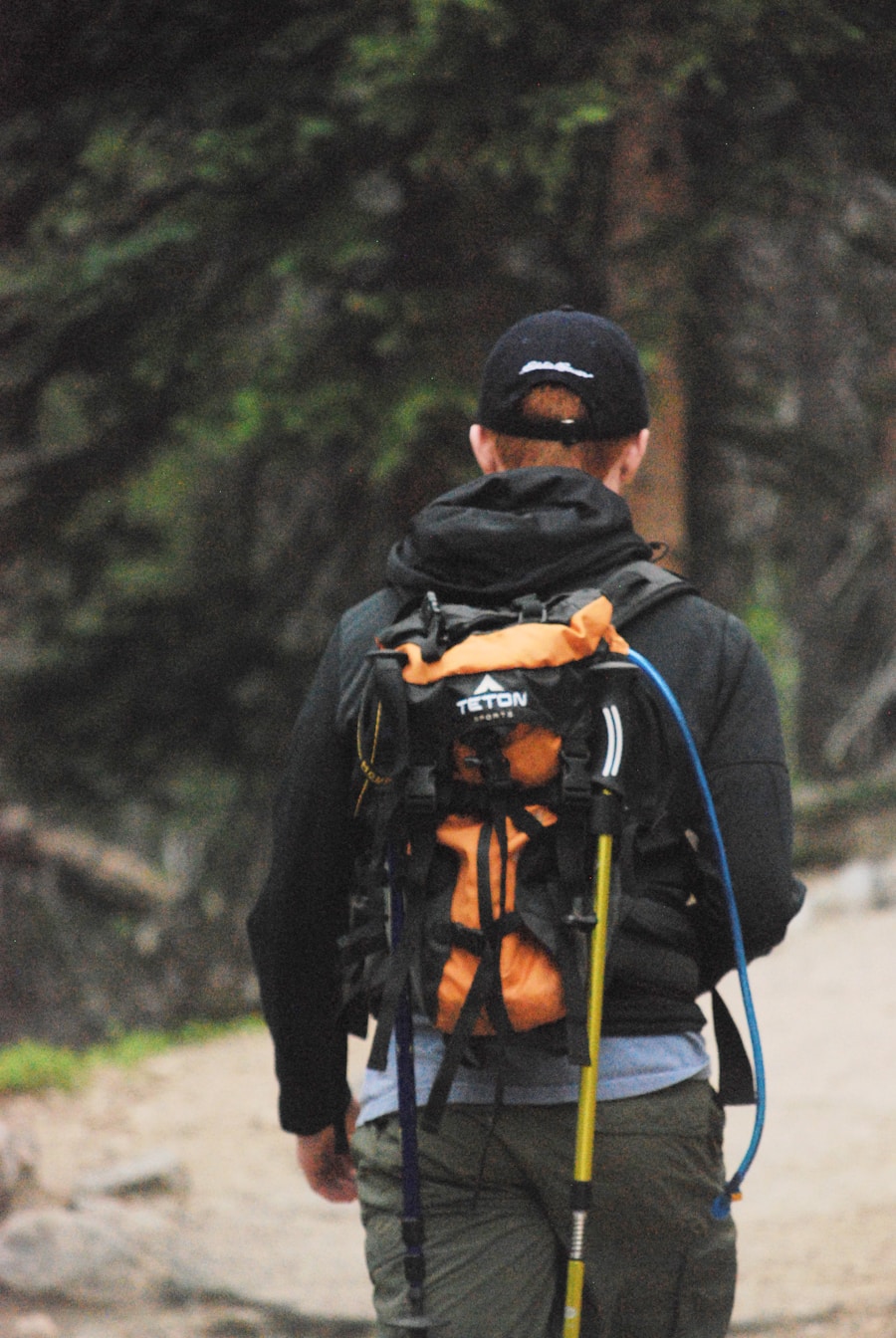Footwear is one of the most critical components of any outdoor adventure, whether it be hiking, trekking, or camping. The right pair of shoes or boots can make the difference between a comfortable journey and a painful ordeal. When selecting footwear, it is essential to consider the terrain you will be traversing.
For rocky trails, a sturdy pair of hiking boots with good ankle support and a rugged sole is advisable. These boots should ideally be waterproof to keep your feet dry in wet conditions, as moisture can lead to blisters and discomfort. Brands like Merrell and Salomon offer a range of options that cater to various hiking needs, providing both durability and comfort.
In contrast, if your adventure involves lighter trails or urban exploration, a good pair of trail running shoes may suffice. These shoes are typically lighter and more breathable than traditional hiking boots, allowing for greater agility and speed. However, they may lack the support needed for more challenging terrains.
It’s also crucial to break in your footwear before embarking on a long journey; wearing new shoes for extended periods can lead to blisters and foot fatigue. Additionally, consider the type of socks you wear; moisture-wicking materials can help keep your feet dry and comfortable, further enhancing your overall experience.
Key Takeaways
- Choose footwear that is comfortable, durable, and suitable for the terrain you will be hiking in.
- Select a backpack that is the right size for your needs and has comfortable straps and support for long hikes.
- Dress in layers and choose moisture-wicking clothing to stay comfortable and dry during your hike.
- Bring navigation tools such as a map, compass, or GPS device to help you stay on track during your hike.
- Stay hydrated by bringing enough water and consider using a hydration pack for easy access on the trail.
- Pack a first aid kit with essential items such as bandages, pain relievers, and blister treatment.
- Bring a lightweight and weatherproof shelter, such as a tent or tarp, as well as a sleeping bag or pad for overnight hikes.
- Carry safety and emergency equipment such as a whistle, flashlight, and fire starter to stay prepared for unexpected situations.
Backpack
A well-designed backpack is indispensable for any outdoor excursion, serving as the primary means of carrying essential gear and supplies. When choosing a backpack, size and capacity are paramount considerations. A daypack, typically ranging from 15 to 30 liters, is suitable for short hikes where minimal gear is required.
For longer trips, a larger backpack with a capacity of 50 liters or more is necessary to accommodate sleeping bags, cooking equipment, and extra clothing. Brands like Osprey and Deuter offer a variety of backpacks tailored to different activities and body types, ensuring that you can find one that fits comfortably. Beyond size, the fit and features of the backpack are equally important.
Look for adjustable straps and a padded hip belt to distribute weight evenly across your body, reducing strain on your shoulders and back. Ventilation is another key feature; many modern backpacks come equipped with mesh panels that allow airflow, keeping your back cool during strenuous hikes. Additionally, consider pockets and compartments for organization; external pockets can provide easy access to water bottles or snacks without having to dig through the main compartment.
A well-organized backpack not only enhances convenience but also ensures that you can quickly find what you need when you need it.
Clothing

The clothing you choose for outdoor activities plays a significant role in your comfort and safety. Layering is a fundamental principle in outdoor apparel, allowing you to adapt to changing weather conditions effectively. The base layer should consist of moisture-wicking materials that draw sweat away from your skin, keeping you dry and warm.
Fabrics such as merino wool or synthetic blends are excellent choices for this layer. The mid-layer provides insulation; fleece jackets or down vests are popular options that trap heat while remaining lightweight. The outer layer serves as protection against wind and rain.
Waterproof jackets with breathable membranes are essential in unpredictable weather conditions, ensuring that you stay dry without overheating. When selecting pants, consider options that offer flexibility and durability; convertible pants that zip off into shorts can be particularly useful in varying temperatures. Accessories such as hats, gloves, and neck gaiters should not be overlooked; they provide additional warmth and protection from the elements.
Choosing the right clothing not only enhances comfort but also allows for greater mobility and enjoyment during outdoor activities.
Navigation tools
| Navigation Tool | Usage | User Satisfaction |
|---|---|---|
| Google Maps | 80% | 90% |
| Waze | 60% | 85% |
| Apple Maps | 40% | 75% |
In the wilderness, navigation tools are vital for ensuring that you stay on course and reach your destination safely. While many rely on GPS devices or smartphone applications for navigation, it is essential to have traditional tools as backups. A topographic map provides detailed information about the terrain, including elevation changes, water sources, and trails.
Learning how to read a map is a valuable skill that can enhance your outdoor experience significantly. Compasses are also indispensable; they help orient your map and provide direction when electronic devices fail due to battery depletion or lack of signal. In addition to maps and compasses, consider investing in a GPS device designed for outdoor use.
These devices often come equipped with features such as waypoint marking and route planning, making them invaluable for longer treks where trails may not be well-marked. However, it’s crucial to familiarize yourself with your navigation tools before heading out; practice using them in familiar areas to build confidence in your skills. Combining traditional navigation methods with modern technology ensures that you are well-prepared for any situation that may arise while exploring the great outdoors.
Water and hydration
Staying hydrated is paramount during any outdoor activity, as dehydration can lead to fatigue, dizziness, and impaired judgment. Carrying sufficient water is essential; the general guideline is to drink about half a liter of water per hour during moderate activity in moderate temperatures. Depending on the length of your trip, consider using hydration systems such as CamelBak bladders or water bottles that fit easily into your backpack’s side pockets for easy access.
In addition to carrying water, it’s wise to have a plan for water purification if you’ll be near natural water sources. Water filters or purification tablets can make stream or lake water safe to drink by removing harmful bacteria and parasites. Brands like Sawyer offer compact filters that are easy to use and effective at providing clean drinking water on the go.
Understanding how much water you need and how to purify it will ensure that you remain hydrated throughout your adventure.
First aid kit

A well-stocked first aid kit is an essential component of any outdoor gear list. Accidents can happen at any time, whether it’s a minor scrape or a more serious injury like a sprain or fracture. A basic first aid kit should include adhesive bandages in various sizes, antiseptic wipes, gauze pads, adhesive tape, scissors, tweezers, and pain relievers such as ibuprofen or acetaminophen.
Additionally, consider including items specific to your needs or those of your group members; for example, if someone has allergies, antihistamines should be included. It’s also beneficial to familiarize yourself with basic first aid procedures before heading out into the wilderness. Knowing how to treat common injuries such as cuts, burns, or insect bites can make a significant difference in an emergency situation.
Many organizations offer first aid courses tailored for outdoor enthusiasts; these courses can provide valuable skills and confidence when dealing with injuries in remote locations. Regularly check your first aid kit to ensure that supplies are stocked and not expired; being prepared can make all the difference in ensuring safety during your outdoor adventures.
Shelter and sleeping gear
When planning an outdoor excursion that involves overnight stays, selecting appropriate shelter and sleeping gear is crucial for comfort and safety. Tents come in various shapes and sizes; lightweight backpacking tents are ideal for those who prioritize portability without sacrificing durability. Look for tents made from waterproof materials with good ventilation to prevent condensation buildup inside.
Additionally, consider the tent’s ease of setup; some models feature color-coded poles or pop-up designs that simplify the pitching process after a long day of hiking. Sleeping gear is equally important for ensuring restful nights in the wilderness. A quality sleeping bag rated for the expected temperatures will keep you warm during chilly nights; down sleeping bags offer excellent insulation while remaining lightweight but may require extra care in wet conditions.
Pairing your sleeping bag with an inflatable sleeping pad adds an extra layer of comfort by providing cushioning from the ground while also insulating against cold surfaces. Investing in quality shelter and sleeping gear will significantly enhance your overall outdoor experience by allowing you to rest well after a day of exploration.
Safety and emergency equipment
Safety should always be a top priority when venturing into the great outdoors. Carrying emergency equipment can provide peace of mind and potentially save lives in critical situations. A whistle is an essential item; it can be used to signal for help if you become lost or injured.
Additionally, a multi-tool or knife can serve various purposes from food preparation to gear repair; brands like Leatherman offer versatile options that are compact enough for easy transport. Another vital piece of safety equipment is a headlamp or flashlight with extra batteries; these tools are invaluable when navigating in low-light conditions or during emergencies at night. Fire-starting tools such as waterproof matches or lighters should also be included in your gear; being able to start a fire can provide warmth, light, and a means to cook food if necessary.
Lastly, consider carrying an emergency blanket or bivy sack; these lightweight items can provide warmth and protection if you find yourself stranded overnight unexpectedly. By equipping yourself with proper safety gear and knowledge, you can confidently explore the outdoors while minimizing risks associated with unforeseen circumstances.
If you’re planning a hiking trip, you may also be interested in knowing the best time to travel to Puerto Rico or the US Virgin Islands. Check out this article on the best time to travel to Puerto Rico and the US Virgin Islands for a seasonal guide to help you plan your adventure. Additionally, if you’re traveling with children, you may be wondering if you need a car seat. Find out more in this article on traveling with a car seat.
FAQs
What should men wear for hiking?
Men should wear moisture-wicking base layers, comfortable and durable hiking pants, a moisture-wicking shirt, a lightweight and breathable jacket, sturdy hiking boots, moisture-wicking socks, a wide-brimmed hat, and sunglasses.
What materials are best for hiking clothing?
The best materials for hiking clothing are moisture-wicking and quick-drying fabrics such as merino wool, synthetic blends, and nylon. These materials help to keep you dry and comfortable during your hike.
Should men wear sunscreen while hiking?
Yes, men should wear sunscreen while hiking to protect their skin from harmful UV rays. It is recommended to use a broad-spectrum sunscreen with an SPF of 30 or higher and to reapply it every two hours.
What type of footwear is best for hiking?
Sturdy hiking boots with good ankle support and a durable sole are best for hiking. They provide stability and protection for your feet on uneven terrain.
Are hats and sunglasses necessary for hiking?
Yes, wearing a wide-brimmed hat and sunglasses is necessary for hiking to protect your face and eyes from the sun’s rays. This helps to prevent sunburn and eye strain during your hike.
